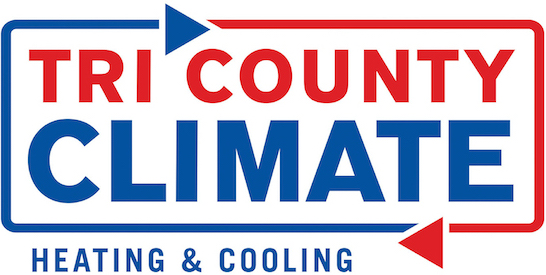
A furnace is usually a background player in your home, helping keep you warm across the cold winter months. It often won't be noticed until something breaks down.
One cause could be that your furnace has a cracked heat exchanger. It’s a potentially dangerous issue, so it’s worthwhile to learn the signs of a cracked heat exchanger and what you should do if you are worried that may be the problem.
What Is a Heat Exchanger in a Furnace?
A heat exchanger helps transition heat from the combustion chamber inside your furnace to the air that circulates inside the ventilation. It typically handles this using coils or tubes that heat up the air while functioning as a barrier to keep gas formed in the combustion chamber, called flue gasses, from escaping out into your home.
Is a Cracked Heat Exchanger Dangerous?
Given its important role, it shouldn't come as a surprise that a broken heat exchanger can pose a risk. Cracks in the heat exchanger can permit dangerous gasses – like carbon monoxide, which can be lethal – to flow throughout your home.
For that reason, don't ever use your heater if you believe you're dealing with a cracked heat exchanger, as this could make the entire household ill. Call an HVAC professional as soon as possible if you are worried your heating has a cracked heat exchanger that should be repaired.
Four Symptoms of a Cracked Heat Exchanger:
- Furnace switches off: A cracked heat exchanger could cause your furnace to shut off.
- Odd Smells: If the air coming out of your furnace has a powerful chemical odor, it could be an indicator that gasses are seeping through cracks in your heat exchanger. These byproducts, which can smell like formaldehyde, are a common warning sign.
- Carbon monoxide alarm goes off or you recognize symptoms of poisoning: If a cracked heat exchanger is emitting carbon monoxide into your home, your carbon monoxide alarm could go off or family members might experience signs of carbon monoxide poisoning. Complications include headaches, dizziness, weakness, nausea, vomiting or feeling tired. If the alarm goes off or you feel unwell, get out of the home immediately and then call for help.
- Soot: If you spot black sooty accumulating on the exterior of your furnace, it’s an indication something may be seriously wrong.
What You Can Do if Your Furnace Heat Exchanger is Cracked
If you worry your furnace has a cracked heat exchanger, contact a professional with extensive experience in furnace installation Bend right away so they can examine your system and, if required, handle a furnace heat exchanger replacement. Costs often differ depending on the situation, but estimates often hover around $1,000 to $3,000.
However, the good news is that heat exchangers are often included in the warranty. You’ll want to review the warranty paperwork on your furnace, as while the warranty won't always cover the entire cost of repairs, it can significantly lower your bill.
How to Prevent a Cracked Heat Exchanger in Your Home
One of the easiest ways to prevent a problem in your furnace overall is via consistent furnace maintenance. Furnaces provide the best possible return on investment when they run efficiently. Hiring a skilled professional to check your furnace for broken-down parts, clogs in the air filters and other common problems can help you avoid getting a big bill later on.
It’s also a good idea to inspect your furnace filters every few months – it’s ideal some filters be swapped out every 90 days or sooner if they are dirty or grimy. While the filters aren't a part of the heat exchanger itself, the strain of pulling air through a clogged filter makes the entire furnace work longer to accomplish its job. And the harder your furnace has to work, the more deterioration components like the heat exchanger will sustain.

